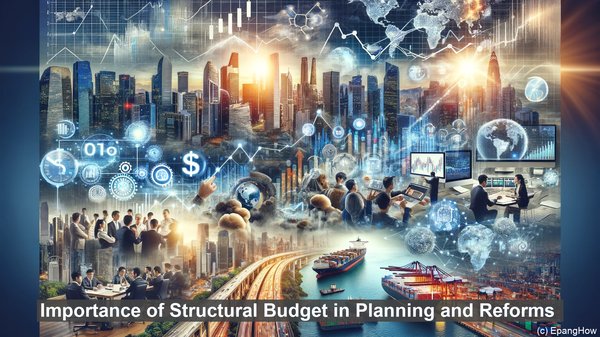Introduction: The Crucial Role of Budgets in Economic Planning
Hello everyone! Budgets are the backbone of any economic plan. They help governments allocate resources, set priorities, and achieve their policy objectives. Today, we’ll delve into two important types of budgets: the cyclically adjusted budget and the structural budget. While they may sound similar, they serve distinct purposes and have different implications. Let’s explore!

Cyclically Adjusted Budget: Accounting for Economic Cycles
The cyclically adjusted budget, often abbreviated as CAB, takes into account the natural fluctuations of the economy. It acknowledges that during economic booms, tax revenues tend to be higher, while during recessions, they decline. Similarly, government spending on programs like unemployment benefits tends to rise during downturns. The CAB adjusts the budget figures to reflect these cyclical changes, providing a more accurate picture of the underlying fiscal position.
Significance of Cyclically Adjusted Budget in Policy-making
The cyclically adjusted budget is particularly relevant for fiscal policy-making. By accounting for the cyclical component, it allows policymakers to assess the structural health of the economy. For example, if the actual budget deficit is higher than the cyclically adjusted deficit, it suggests that the government is running a larger deficit due to the economic downturn, rather than any structural issues. This insight helps in determining the appropriate policy response, such as implementing stimulus measures during a recession.

Structural Budget: Focusing on Long-term Sustainability
While the cyclically adjusted budget focuses on short-term fluctuations, the structural budget takes a longer-term perspective. It aims to assess the underlying fiscal position of the government, independent of the economic cycle. It looks at factors like demographic trends, changes in government commitments, and potential revenue sources. The structural budget provides insights into the sustainability of government finances over the medium to long term.
Importance of Structural Budget in Planning and Reforms
For policymakers, the structural budget is crucial for designing sustainable fiscal policies and initiating structural reforms. It helps in identifying areas where expenditure adjustments or revenue enhancements may be needed to ensure long-term fiscal stability. By considering the structural budget, policymakers can make informed decisions that align with the government’s broader economic and social objectives.
